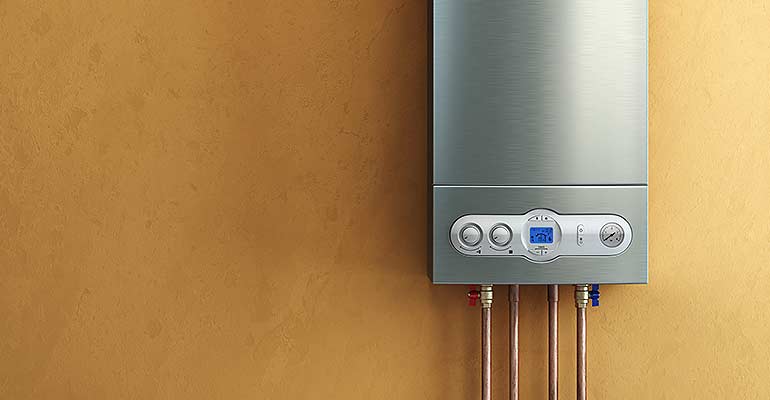The content directly below relating to Water Heater Maintenance Tips You Can't Afford to Forget is indeed attention-grabbing. You should check it out.

Hot water is necessary for day-to-day comfort, whether it's for a refreshing shower or cleaning recipes. To guarantee your hot water system runs efficiently and lasts longer, routine upkeep is vital. This article offers functional ideas and understandings on how to maintain your home's hot water system to prevent disturbances and pricey repairs.
Introduction
Maintaining your home's hot water system may appear overwhelming, but with a few simple steps, you can ensure it operates efficiently for many years to find. This guide covers whatever from understanding your hot water system to DIY maintenance suggestions and understanding when to contact expert aid.
Relevance of Keeping Your Warm Water System
Normal upkeep not just expands the life-span of your warm water system yet additionally guarantees it runs effectively. Ignoring upkeep can cause reduced effectiveness, higher energy bills, and even premature failure of the system.
Signs Your Hot Water System Demands Upkeep
Recognizing when your warm water system requires interest can avoid major issues. Look out for indicators such as irregular water temperature level, odd noises from the heater, or rusty water.
Flushing the Hot Water Heater
Purging your hot water heater eliminates sediment buildup, boosting performance and extending its life.
Checking and Replacing Anode Rods
Anode rods prevent deterioration inside the storage tank. Examining and replacing them when broken is critical.
Complicated Problems Requiring Specialist Aid
Examples consist of significant leaks, electric troubles, or if your water heater is consistently underperforming.
Regular Expert Maintenance Benefits
Specialist maintenance can include detailed evaluations, tune-ups, and ensuring conformity with security standards.
Evaluating and Changing Temperature Setups
Changing the temperature setups guarantees optimum efficiency and safety.
Do It Yourself Tips for Maintenance
You can perform a number of maintenance jobs yourself to maintain your hot water system in top problem.
Checking for Leakages
Routinely evaluate pipes and links for leakages, as these can lead to water damages and higher expenses.
Understanding Your Warm Water System
Before diving right into maintenance jobs, it's useful to recognize the fundamental parts of your hot water system. Commonly, this includes the hot water heater itself, pipes, anode poles, and temperature controls.
Month-to-month Maintenance Tasks
Normal monthly checks can assist catch minor concerns before they rise.
Testing Stress Relief Valves
Evaluating the stress relief valve guarantees it functions properly and protects against excessive stress buildup.
Protecting Pipelines
Insulating warm water pipelines reduces warm loss and can save energy.
When to Call a Specialist
While DIY maintenance is valuable, some concerns require expert expertise.
Final thought
Normal upkeep of your home's warm water system is vital for performance, durability, and price savings. By complying with these tips and understanding when to look for professional aid, you can ensure a trustworthy supply of hot water without unforeseen disturbances.
Water Heater Maintenance Tips
Test the TPR Valve
Shut off the power and the cold-water supply valve. Place a bucket under the pipe connected to the temperature-pressure-release (TPR) valve on the top or side of the tank. (This valve opens if the tank pressure gets too high.) Lift the valve’s tab to let some water out, then let go. If water keeps flowing, drain the tank partway, unscrew the old valve with a pipe wrench, and install a new one. Check the Anode Rod
Put a hose to the tank’s drain cock and let out a few gallons of water. Now fit a 1 1/16-inch socket onto the rod’s hex head on top of the heater (or under its top plate) and unscrew the rod. If it’s less than ½ inch thick or coated with calcium, buy a new one, wrap its threads with Teflon tape, put it back in the tank, and tighten securely. Use this segmented rod if headroom above the tank is limited. Drain the Tank and Wash Out Sediment
Drain the remaining water in the tank into the bucket, then stir up the sediment on the tank’s bottom by briefly opening the cold-water supply valve. Drain and repeat until clean water comes out of the hose. Close the drain cock, refill the tank, and turn its power back on. Adjust the Temperature
Find the temperature dial on the side of the tank and unscrew its cover. Adjust the dial to 120 degrees using a flathead screwdriver. For every 10 degrees the temperature is lowered, you can expect to save up to 5 percent in energy costs. Turn the water heater off or the thermostat down to its lowest setting if you plan to be away from home for more than three days. Insulate the Pipes
Buy some self-sticking 3/8-inch-thick foam pipe insulation that matches the pipes’ diameter. Slide the foam over the hot-and cold-water pipes as far as you can reach. Insulating the cold-water pipe prevents condensation in summer. Peel the tape and squeeze the insulation closed. If the pipe is 6 inches or less from the flue, cover it with 1-inch-thick unfaced fiberglass pipe wrap. https://www.thisoldhouse.com/plumbing/21016402/how-to-maintain-a-water-heater

I found that write up about How to Maintain a Hot Water Heater in a Few Simple Steps while doing a lookup on the web. Those who liked our post please make sure you remember to share it. Thank you for being here. Don't hesitate to visit our blog back soon.
Click On This Link